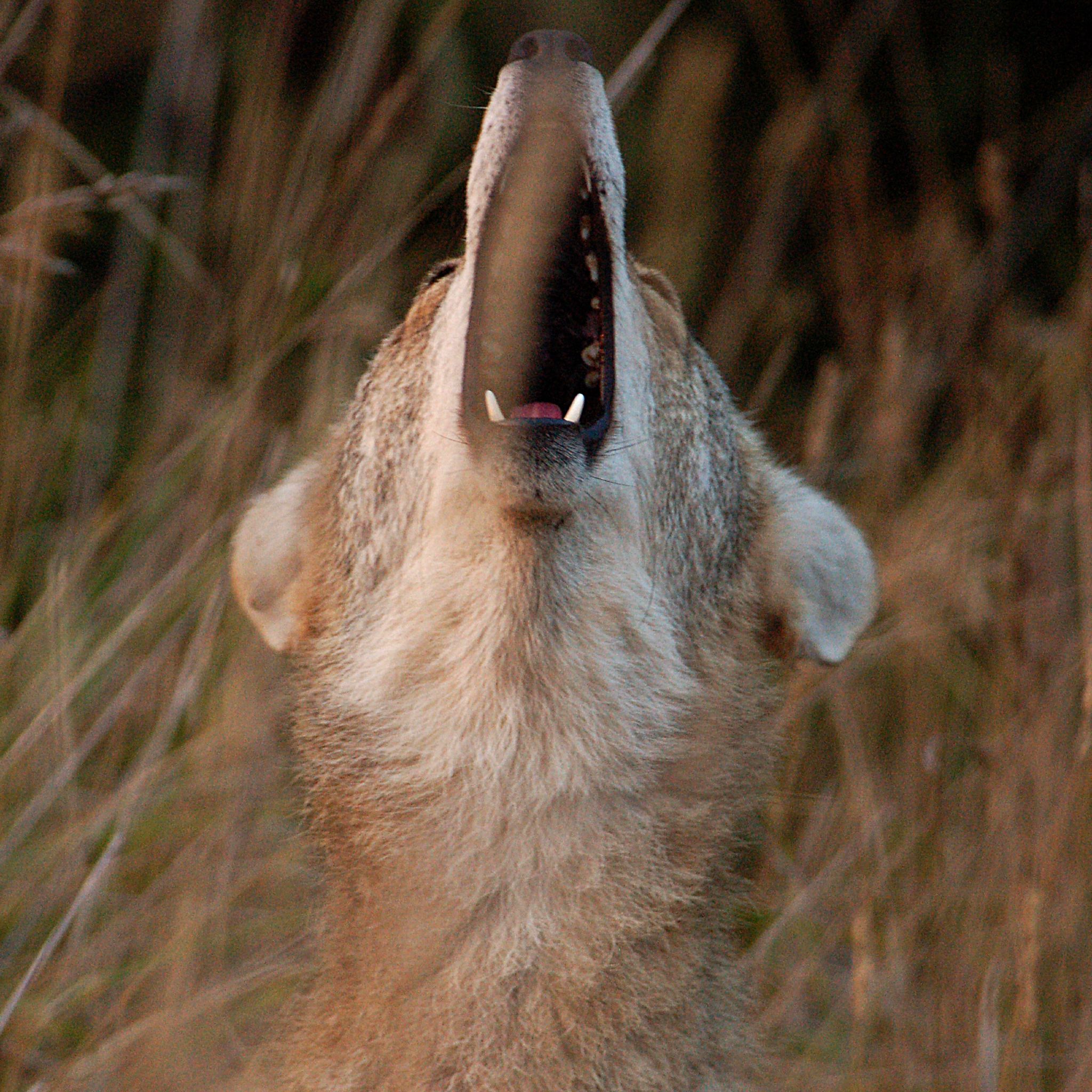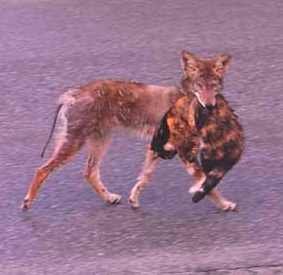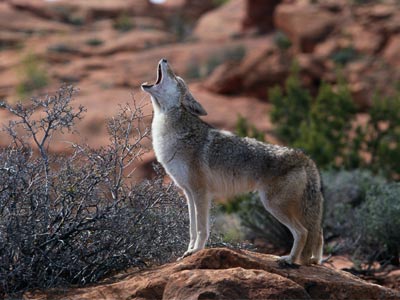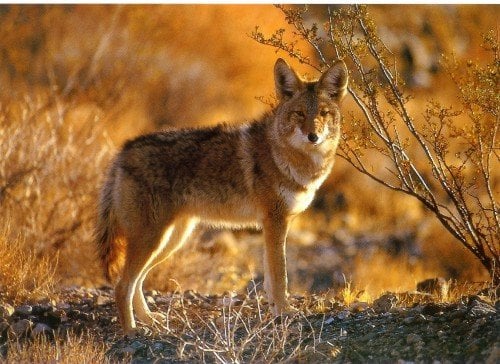
We have been told many times, as new residents, to watch our dogs and not let them be alone outside because of the coyotes. We have two golden retrievers, Yogi (13) and Woody (2), that have been known to make a road trip from our home in Seattle to Borrego Springs.
 I hadn't taken the locals' advice all that seriously, believing Yogi and Woody can stand up to any 'ol coyote. Until the next door neighbors, who have two dogs, said in previous years there have been huge packs of coyotes (a dozen+) roaming the deAnza Golf Course.
I hadn't taken the locals' advice all that seriously, believing Yogi and Woody can stand up to any 'ol coyote. Until the next door neighbors, who have two dogs, said in previous years there have been huge packs of coyotes (a dozen+) roaming the deAnza Golf Course.
There has been a "lost" poster on the bulletin board at the Center Market that includes a picture of a small missing dog. All of us who saw that poster were thinking the same thing.  I hadn't taken the locals' advice all that seriously, believing Yogi and Woody can stand up to any 'ol coyote. Until the next door neighbors, who have two dogs, said in previous years there have been huge packs of coyotes (a dozen+) roaming the deAnza Golf Course.
I hadn't taken the locals' advice all that seriously, believing Yogi and Woody can stand up to any 'ol coyote. Until the next door neighbors, who have two dogs, said in previous years there have been huge packs of coyotes (a dozen+) roaming the deAnza Golf Course.
 |
| PRACTICING THE HOWL |
The scientific name for coyote is Canis latrans, which means barking dog in Latin.
Coyotes are smaller than wolves and are sometimes called prairie wolves or brush wolves. Members of the dog family, they weight about 15-45 pounds, are 40" to 60" inches (including tail) and 15" to 20" high at the shoulder.
The coyote is an important spiritual symbol for many indigenous tribes and appears often in the tales and traditions of Native Americans, usually as a savvy and clever beast. He is seen both as a trickster causing trouble and as a provider of many good things for this world.

Coyotes form strong family groups. In spring, females den and give birth to litters of two to twelve pups. Both parents feed and protect their young and their territory. The pups are able to hunt on their own by the following fall. When coyotes are about two years old, they select a mate and stay with that mate for life.

Coyotes have 42 teeth in a strong jaw - perfect for holding and biting prey. Their senses of smell, sight and hearing are exceptional which makes them very cunning hunters.
When hunting, coyotes frequently pursue prey in relays, enabling the pack to nip at prey and run down animals that could escape a single coyote. They can run in bursts up to 40 miles per hour and can jump an 8' fence. Coyotes can also travel up to 400 miles at a stretch.
Coyotes eat almost anything. They hunt rabbits, rodents, fish, frogs, and even deer. They also happily dine on insects, snakes, fruit, grass, domestic pets and our garbage.
Coyotes communicate through barking, growling, yapping and howling. They are known for their distinctive call which can develop into a canine chorus at night.
Coyotes maintain their territory by marking it with urine.
Coyote parents supply live mice to their pups for hunting practice...
kind of like giving car keys to the kids!

I discovered a wonderful blog while working on this post. Check out The Daily Coyote (www.dailycoyote.net), about Charlie, an orphaned coyote raised by a family.
 |
| Charlie - www.dailycoyote.net |
